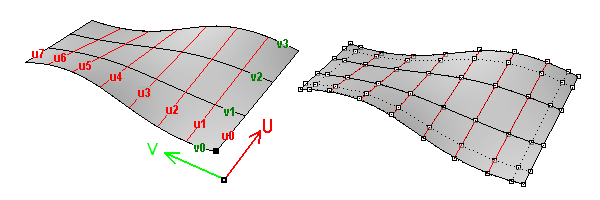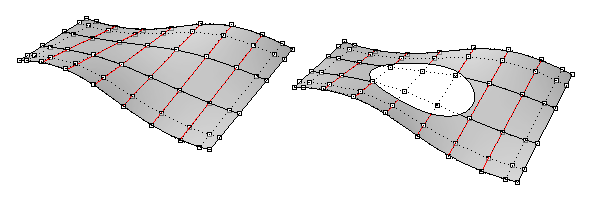NURBS Surfaces Concepts
Summary: Basic concepts of NURBS surface geometry
One of the main geometry concepts that comes up often when modeling with Rhino is NURBS curves and surfaces. Non-Uniform Rational Basis Spline (NURBS) is an accurate mathematical representation of curves and surfaces. The shape of the surface is defined by a number of control points and the degree of that surface in each one of the two directions (u- and v-directions). Refer to Rhino Help Glossary for more details.
NURBS surfaces can be trimmed or untrimmed. Think of trimmed surfaces as using an underlying NURBS surface and closed curves to cut a specific shape of that surface. Each surface has one closed curve that define the outer border (OuterLoop) and as many non-intersecting closed inner curves that define holes (InnerLoops). We refer to a surface with outer loop that is the same as that of its underlying NURBS surface and that has no holes as untrimmed surface.
The surface on the left is untrimmed. The one on the right is the same surface trimmed with an elliptical hole. Note that the NURBS structure of the surface doesn’t change when trimming.
A polysurface consists of more than one surface joined together. Each of the surfaces has its own u- and v-direction. Thus, paneling using uv-directions may not continue the paneling pattern across the polysurface edges. Paneling commands can either use surface uv-directions or follow a specified direction.


